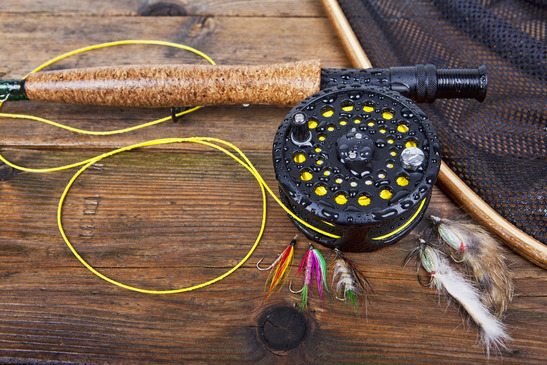 One of the most important steps when it comes to being a successful fly-fisher, is learning how to tie a lifelike fly properly. Most well-tied flies are done specifically to cater to the particular kind of fish you are trying to catch. Here are the three most common ways to tie a fly:
One of the most important steps when it comes to being a successful fly-fisher, is learning how to tie a lifelike fly properly. Most well-tied flies are done specifically to cater to the particular kind of fish you are trying to catch. Here are the three most common ways to tie a fly:
The first is the pheasant tail nymph, which is considered to be the best mayfly nymph imitation designed to this day. This type of tie attracts mostly trout food throughout the fly-fishing season, one of the most desired fish to catch. To learn all the details that are involved in tying the pheasant tail nymph, watch this video on youtube, which will go into depth on all the specifics that come with tying the perfect fly to ensure you catch the right fish.
The next fly to know how to tie is the Adams dry fly, which is an American fly pattern that, according to Takemefishing.org, is deemed to be the best dry fly pattern ever created. When it comes to fly tying, being able to change the patterns of the tie is important when it comes to targeting your prey. The Adams dry fly imitates various species of mayflies and caddis, which is why the grey muskrat body color can be easily switched. To learn more about how to tie this particular fly, this youtube video is extremely handy.
The last fly to know how to tie when it comes to fly-fishing is the woolly bugger, the most recognized fly out of them all. According to Takemefishing.org, “The woolly bugger represents a streamer – in other words, not a ‘fly’ per se, but rather a baitfish,” (Fly Tying). The woolly bugger can look like a leech or any larva-looking bug moving around the lake or stream that you’ll be fishing in. Most people tie woolly buggers with earth-like tones and often will use a flash of a bright color in the tail. This is the most simplistic forms of fly-tying, requiring basic materials to form many varieties of buggers. Here is a youtube video to help you start tying a woolly bugger.
For more information on fly-tying, or to just read about fly-fishing in general, visit Takemefishing.org.
